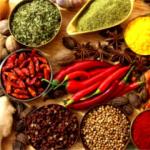Anyone who monitors their diet and counts the calories consumed, as well as when preparing various dishes using cottage cheese, will find it useful to know how many grams of cottage cheese are in a glass (200 ml, 250 ml) and how you can measure cottage cheese without scales using a faceted glass.
How many grams of cottage cheese are in a faceted glass (200 ml)?
One full faceted glass filled to the top (to the rim) holds 250 grams of cottage cheese.
1 faceted glass filled to the rim (to the risk) holds 200 grams of cottage cheese.
How many grams of cottage cheese are in a 250 ml glass (thin, tea)?
One 250 ml glass holds 250 grams of cottage cheese.
How to measure cottage cheese without scales in grams using a glass?
Many recipes use a standard amount of cottage cheese in grams, so below is an estimate of how many cups of cottage cheese to use to measure out the recipe:
- 600 grams of cottage cheese - how many glasses? 600 g of cottage cheese = 3 faceted glasses of cottage cheese, filled to the rim (up to the risk).
- 500 grams of cottage cheese - how many glasses? 500 g of cottage cheese = 2 full faceted glasses of cottage cheese, filled to the top.
- 400 grams of cottage cheese – how many glasses? 400 g of cottage cheese = 2 glasses of cottage cheese, filled to the rim (up to the risk).
- 350 grams of cottage cheese - how many glasses? 350 g of cottage cheese = 1 full faceted glass of cottage cheese + 5 heaped tablespoons of cottage cheese.
- 300 grams of cottage cheese - how many glasses? 300 g of cottage cheese = 1 faceted glass of cottage cheese, filled to the rim + 5 heaped tablespoons of cottage cheese.
- 250 grams of cottage cheese - how many glasses? 250 g of cottage cheese = 1 full faceted glass of cottage cheese.
- 200 grams of cottage cheese - how many glasses? 200 g of cottage cheese = 1 faceted glass of cottage cheese, filled to the risk (to the rim).
- 150 grams of cottage cheese - how many glasses? 150 g of cottage cheese = 3/4 faceted glass of cottage cheese = 7.5 heaped tablespoons of cottage cheese.
- 125 grams of cottage cheese - how many glasses? 125 g of cottage cheese = half a full faceted glass of cottage cheese.
- 100 grams of cottage cheese - how many glasses? 100 g of cottage cheese = half a faceted glass of cottage cheese, filled to the rim = 5 heaped tablespoons of cottage cheese.
You may also be interested in reading the articles
The popularity of sugar is difficult to underestimate; millions of people use it every day, so in this article we will figure out how you can quickly and easily weigh the required amount of sugar for your favorite recipes with regular spoons on hand, how to measure sugar without scales with sufficient accuracy and how much granulated sugar fits in a dining room and a teaspoon.
Before you start measuring how much granulated sugar (ordinary sugar) is contained in spoons, we note that in many recipes, if it says a spoonful of sugar is required, this means you need to use a full heaped spoon. The following values for the weight of sugar in a heaped spoon are valid when the sugar is poured into a spoon with the largest possible heap.


How many grams of sugar are in a tablespoon?
There are 25 grams of sugar in a heaped tablespoon
1 tablespoon contains 20 grams of sugar without a slide
How many grams of granulated sugar are in a dessert spoon?
In a dessert spoon 15 grams of granulated sugar with a slide
One dessert spoon contains 10 grams of sugar without a slide.
How many grams of sugar are in a teaspoon?
There are 7 heaped grams of sugar in a teaspoon.
1 teaspoon contains 5 grams of sugar without a slide


For those who want to know how many calories are in a spoonful of sugar, first consider the total calorie content of granulated sugar and, based on this, calculate the exact value in one teaspoon and tablespoon.
Sugar calorie content 387 calories per 100 grams of product
The calorie content of a heaping tablespoon of sugar is 97 calories (without a heaping spoon, 77 calories).
The calorie content of a heaped teaspoon of sugar is 27 calories (without a heap of sugar, 19 calories).
How to measure sugar without scales using spoons


- How to measure 3 kilograms of sugar without a scale with a spoon? 3 kg of sugar = 120 heaped tablespoons.
- How to measure 2 kilograms of sugar without a scale with a spoon? 2 kg of sugar = 2000 g of sugar = 80 heaped tablespoons of granulated sugar.
- How to measure 1.5 kilograms of sugar without a scale with a spoon? 1.5 kg of sugar = 1500 grams of sugar = 60 heaped tablespoons of sugar.
- How to measure 1 kilogram of sugar without a scale with a spoon? 1 kg of sugar = 1000 g of sugar = 40 heaped tablespoons of sugar.
- How to measure 900 grams of sugar without a scale with a spoon? 900 g sugar = 36 heaped tablespoons.
- How to measure 800 grams of sugar without a scale with a spoon? 800 g sugar = 32 heaped tablespoons.
- How to measure 750 grams of sugar without a scale with a spoon? 750 g sugar = 30 heaped tablespoons.
- How to measure 700 grams of sugar without a scale with a spoon? 700 g sugar = 28 heaped tablespoons.
- How to measure 600 grams of sugar without a scale with a spoon? 600 g sugar = 24 heaped tablespoons.
- How to measure 500 grams of sugar without a scale with a spoon? 500 g of sugar = 0.5 kg of sugar = 20 heaped tablespoons of sugar.
- How to measure 400 grams of sugar without a scale with a spoon? 400 g sugar = 16 heaped tablespoons.
- How to measure 350 grams of sugar without a scale with a spoon? 350 g sugar = 14 heaped tablespoons.
- How to measure 300 grams of sugar without a scale with a spoon? 300 g sugar = 12 heaped tablespoons.
- How to measure 250 grams of sugar without a scale with a spoon? 250 g sugar = 10 heaped tablespoons.
- How to measure 225 grams of sugar without a scale with a spoon? 225 g sugar = 9 heaped tablespoons.
- How to measure 200 grams of sugar without a scale with a spoon? 200 g sugar = 8 heaped tablespoons.
- How to measure 180 grams of sugar without a scale with a spoon? 180 g of sugar = 7 heaped tablespoons + 1 heaped teaspoon of sugar.
- How to measure 175 grams of sugar without a scale with a spoon? 175 g sugar = 7 heaped tablespoons of sugar.
- How to measure 150 grams of sugar without a scale with a spoon? 150 g sugar = 6 heaped tablespoons.
- How to measure 140 grams of sugar without a scale with a spoon? 140 g of sugar = 5 heaped tablespoons + 1 heaped dessert spoon of sugar = 5 heaped tablespoons + 3 level teaspoons of sugar.
- How to measure 130 grams of sugar without a scale with a spoon? 130 g of sugar = 5 heaped tablespoons of granulated sugar + 1 level teaspoon.
- How to measure 125 grams of sugar without a scale with a spoon? 125 g sugar = 5 heaped tablespoons.
- How to measure 120 grams of sugar without a scale with a spoon? 120 g of sugar = 4 heaped tablespoons + 1 heaped tablespoon of sugar.
- How to measure 110 grams of sugar without a scale with a spoon? 110 g of sugar = 4 heaped tablespoons of sugar + 2 heaped teaspoons.
- How to measure 100 grams of sugar without a scale with a spoon? 100 g sugar = 4 heaped tablespoons.
- How to measure 90 grams of sugar without a scale with a spoon? 90 g of sugar = 3 heaped tablespoons + 3 level teaspoons = 3 heaped tablespoons + 1 heaped dessert spoon.
- How to measure 80 grams of sugar without a scale with a spoon? 80 g of sugar = 3 heaped tablespoons of sugar + 1 level teaspoon.
- How to measure 75 grams of sugar without a scale with a spoon? 75 g sugar = 3 tablespoons.
- How to measure 70 grams of sugar without a scale with a spoon? 70 g sugar = 2 heaped tablespoons + 1 level tablespoon.
- How to measure 60 grams of sugar without a scale with a spoon? 60 g of sugar = 2 heaped tablespoons of sugar + 2 level teaspoons.
- How to measure 55 grams of sugar without a scale with a spoon? 55 g of sugar = 2 heaped tablespoons + 1 heaped teaspoon.
- How to measure 50 grams of sugar without a scale with a spoon? 50 g sugar = 2 heaped tablespoons of granulated sugar.
- How to measure 40 grams of sugar without a scale with a spoon? 40 g of sugar = 2 level tablespoons of sugar.
- How to measure 30 grams of sugar without a scale with a spoon? 30 g of sugar = 1 heaped tablespoon + 1 level teaspoon = 6 level teaspoons of sugar.
- How to measure 20 grams of sugar without a scale with a spoon? 20 g sugar = 1 level tablespoon = 4 level teaspoons.
- How to measure 15 grams of sugar without a scale with a spoon? 15 g of sugar = 1 heaped dessert spoon = 3 level teaspoons of sugar.
- How to measure 10 grams of sugar without a scale with a spoon? 10 g sugar = 1 level dessert spoon = 2 level teaspoons.
- How to measure 5 grams of sugar without a scale with a spoon? 5 g sugar = 1 level teaspoon of sugar.
This table (list) will help you quickly measure sugar with spoons, without bothering yourself with long calculations and searching for electronic scales.
Health
Do you eat right but still can't lose weight? Perhaps it's not what you eat, but amount of food consumed.
Most people don't know what an acceptable serving size should look like. Research has shown that we are poor at judging how much food we should have on our plate, and people often overestimate portion size and underestimate calorie content.
So how do you figure out how much it costs to eat without endlessly counting calories or weighing everything on a scale?
Here's an easy way to determine adequate portion sizes of staple foods and how it looks in relation to the size of your hand.
Meat serving size
Meat: palm of hand

The portion of meat should be the size of the palm of your hand (not including fingers).
The steak in the photo weighs approximately 100 grams and is about the thickness of a deck of cards. A portion of this size of protein can be taken with every meal, and you need to spread your protein intake throughout the day, as we process it better in small portions. However, you should not consume more than 500 grams of red meat per week, and it is better to choose other sources of protein, such as fish and legumes.
Fish portion
White fish: whole hand

White fish such as cod, haddock or pollock are low in fat and calories, so a serving can be as large as your hand (about 150 grams and 100 calories).
White fish contains small amounts of omega-3 and is a good source of selenium, important for the immune system and healthy hair and nails.
Oily fish: palm

Like meat, a portion of fatty fish such as salmon, mackerel or sardines should be about the size of your palm. Fatty fish fillets weigh about 100 grams and contain about 200 calories. One serving per week will provide you with enough omega-3 fatty acids.
Salad portion
Spinach: two handfuls

This is the amount of raw spinach one person needs for one (80 grams) of the 5 servings of vegetables recommended daily. The same serving size will work for other lettuce leaves.
Vegetables should be eaten with every meal, and not just a few leaves, but almost the whole bag.
Serving of fruit
Berries: two hands

One of your five servings of fruit a day is a handful that fits in the palm of your hand.
This amount of berries contains about 90 calories, but other fruits, such as grapes, contain more sugar and about 161 calories.
Serving of vegetables
Vegetables: clenched fists

One in five servings of vegetables (80 grams) per day should be at least the size of your fist. It is also important to strive for a variety of vegetables in your diet and eat vegetables of different colors. Vegetables should take up half of your plate.
A serving of pasta per day
Pasta: clenched fist

This amount of pasta seems quite small, but the pasta will expand in size as it cooks. This serving contains 75 grams and 219 calories. A serving of uncooked rice should also be the size of your fist.
Carbohydrates, which are important for maintaining energy, and fiber should take up a quarter of your plate (proteins the other quarter and vegetables half the plate).
The sauce will add extra calories.
A serving of nuts per day
Nuts: one palm

Nuts and seeds make a good snack, are filling and contain heart-healthy unsaturated fat, although they are high in calories. A good portion is something you can hold in the palm of your hand. Therefore, try to eat nuts and seeds separately, and not several at once.
Portion of potatoes
Potato: fist

A carbohydrate serving should be approximately 200 calories for women and 250 calories for men.
One 180g potato contains about 175 calories, but a baked potato can be twice as much, so you can share it between two people.
If you are not trying to lose weight, you can eat a slightly larger serving.
Food servings per day


Butter: tip of thumb
Any serving of fats, including butter, vegetable oil, and peanut butter, should be no larger than a teaspoon or the size of the tip of your thumb from knuckle to nail tip. In total, there should be no more than 2-3 servings of fat per day.
Chocolate: index finger
A piece of chocolate the size of your index finger (20 grams) contains approximately 100 calories and is an adequate treat.


Cheese: two fingers
A 30 gram portion of cheese should be the length and depth of two fingers. It contains about 125 calories and provides you with a third of the recommended amount of calcium. A serving of grated cheese can be the size of your fist.
Cake: two fingers
The cake slice should be the length and width of two fingers (one end may be a little wider if you cut with a wedge). This serving contains about 185 calories and is acceptable as a treat.
When we find a new recipe for ourselves, on the Internet or a new cookbook, or perhaps a friend shared it, then first of all we pay attention to the products needed for cooking, and especially to their proportions. Quantities dry ingredients(loose, solid products) are usually indicated in grams or measured in glasses, teaspoons or tablespoons. Well, everything is clear with grams. If you have a kitchen scale, then you probably know what to do. If there are no scales, then we need to somehow convert our grams into glasses or spoons, based on how much of a particular product is required. It is more convenient to measure larger quantities in glasses. This is where it will help us food weights table. It will also be needed for reverse recalculation, when it is more convenient for us to measure all quantities using scales, rather than dirty glasses and spoons. But it is important to remember that in recipes adapted for Russia, a glass does not mean beaker(minimum volume - 300 ml), and regular faceted(volume up to the marks - 200 ml, to the edges - 250 ml). In this case, the glass must be filled exactly to the line where the edges end, no need compact. Volume teaspoon should be 5 ml, and canteen- 18 ml. We scoop dry products with a heaped spoon.
In foreign culinary literature, quantities are measured not in glasses, but in cups. But this doesn’t really change anything, since a cup is the same glass, filled to the brim - the same 250 ml. If you often come across recipes with "cups" instead of "glasses", then you will find the following information useful.
In this case, we use a measuring cup, or buy ourselves a special set of measuring spoons. Fortunately, these are on sale.Quantities liquid products indicated either in ml or in glasses, spoons. Sometimes the value is indicated in grams. If glasses are indicated - we take a faceted glass, spoons are indicated - we use them, milliliters are indicated - we take a measuring cup, grams are indicated - we use scales, or from the table we determine how many glasses or spoons are needed. And again it comes to our aid table of food weights. Liquid foods should fill spoons to the brim. Scoop viscous products with a heaped spoon.
If you don't have a cut glass in your kitchen, use a measuring glass. Look for the 200 and 250 ml marks. For clarity, they can be emphasized with a bright marker. If you need a cup of flour, add it to the bright line. Of course, if the required amount of flour is a multiple of 200 grams, then it is more convenient to use a measuring cup (flour scale). At the same time, spoon the flour into the glass, rather than scoop it up. In the latter case, voids may form. It is more convenient to measure small amounts of flour with a tablespoon. A spoonful of flour is a heaped spoonful. Flour should be sifted only after the amount required for the recipe has been measured, since sifted flour does not fit so tightly.
How to measure the right amount of product is up to you to decide. We hope our summary table will help you when preparing your meals. For your convenience, the products in the table are arranged in alphabetical order. Some foods are grouped (legumes, cereals, nuts, etc.). The table indicates how many grams the product is contained in a certain volume.
| Product | 1 tablespoon | 1 teaspoon | 1 glass, faceted 200ml (up to the rim) | 1 glass of tea 250 ml (to the brim) |
|
|---|---|---|---|---|---|
| Jam | 45 | 20 | 270 | 330 | |
| Water | 18 | 5 | 200 | 250 | |
| LEGUMES: | Peas shelled | 25 | 10 | 174 | 220 |
| Beans | 30 | 10 | 185 | 230 | |
| Lentils | 25 | 7 | 170 | 210 | |
| Dried mushrooms | 10 | 4 | |||
| Jam | 40 | 15 | - | - | |
| Baker's yeast | - | 5 years | - | - | |
| Gelatin (powdered) | 15 | 5 | - | - | |
| Raisin | 25 | - | 130 | 165 | |
| Cocoa powder | 15 | 5 | 130 | - | |
| Potato starch | 12 | 6 | 130 | 160 | |
| Natural ground coffee | 20 | 7 | 80 | 100 | |
| Cornflakes | 7 | 2 | 40 | 50 | |
| GREATS: | "Hercules" | 12 | 3 | 70 | 90 |
| Buckwheat (kernel) | 25 | 8 | 170 | 210 | |
| corn | 20 | 6 | 145 | 180 | |
| Manna | 25 | 8 | 160 | 200 | |
| Oatmeal | 18 | 5 | 135 | 170 | |
| Rice | 25 | 8 | 185 | 230 | |
| Barley | 25 | 8 | 185 | 230 | |
| Wheat | 20 | 6 | 145 | 180 | |
| Millet | 25 | 8 | 180 | 220 | |
| Sago | 20 | 6 | 145 | 180 | |
| Barley | 20 | 7 | 154 | 180 | |
| Liquor | 20 | 7 | - | - | |
| Citric acid (crystals) | 25 | 8 | - | - | |
| Poppy | 15 | 4 | 120 | 155 | |
| Mayonnaise, margarine (melted) | 15 | 4 | 180 | 230 | |
| Pasta | - | - | 190 | 230 | |
| Honey | 35 | 12 | 265 | 325 | |
| Vegetable oil | 17 | 5 | 180 | 225 | |
| Butter | 50 | 30 | - | - | |
| Ghee butter | 20 | 6 | 190 | 240 | |
| Honey (liquid) | 30 | 9 | 330 | 415 | |
| Milk, fermented baked milk, kefir, yogurt | 18 | 5 | 200 | 250 | |
| Condensed milk | 30 | 12 | 220 | 300 | |
| Powdered milk | 20 | 10 | 100 | 120 | |
| Semolina flour | 20 | 7 | 145 | 180 | |
| Corn flour | 30 | 10 | 130 | 160 | |
| Wheat flour, rye | 25 | 8 | 130 | 160 | |
| NUTS: | Peanuts, shelled | 25 | 8 | 140 | 175 |
| Walnuts (kernel) | 30 | 10 | 130 | 165 | |
| Cedar | 10 | 4 | 110 | 140 | |
| Almond (kernel) | 30 | 10 | 130 | 160 | |
| Crushed nuts | 20 | 7 | 90 | 120 | |
| Hazelnut (kernel) | 30 | 10 | 130 | 170 | |
| Cereals | 14 | 4 | 100 | 180 | |
| wheat flakes | 9 | 2 | 50 | 60 | |
| Jam | 36 | 12 | - | - | |
| Curdled milk | 18 | 5 | 200 | 250 | |
| Sour cream 10% | 20 | 9 | 200 | 250 | |
| Sour cream 30% | 25 | 11 | 200 | 250 | |
| Melted lard | 20 | 8 | 200 | 240 | |
| Granulated sugar | 25 | 8 | 160 | 200 | |
| Powdered sugar | 25 | 10 | 140 | 190 | |
| Cream 20% | 18 | 5 | 200 | 250 | |
| Condensed cream with sugar | 30 | 13 | - | - | |
| Drinking soda | 28 | 12 | - | - | |
| Juices (fruit, vegetable) | 18 | 5 | 200 | 250 | |
| Salt | 15 | 5 | 260 | 325 | |
| SPICES: | Ground cloves | - | 3 | - | - |
| Whole cloves | - | 4 | - | - | |
| Mustard | - | 4 | - | - | |
| Dry mustard | - | 3 | - | - | |
| ground ginger | - | 2 | - | - | |
| ground cinnamon | 20 | 8 | - | - | |
| Allspice peas | - | 5 | - | - | |
| Ground allspice | - | 4.5 | - | - | |
| Ground black pepper | 12 | 5 | - | - | |
| Black peppercorns | - | 6 | - | - | |
| Ground crackers | 20 | 5 | 110 | 130 | |
| Dried fruits | - | - | - | 80 | |
| Cottage cheese, fatty, low-fat | 17 | 6 | - | - | |
| Dietary cottage cheese, soft | 20 | 7 | - | - | |
| Curd | 18 | 6 | - | - | |
| tomato paste | 30 | 10 | - | - | |
| Tomato sauce | 25 | 80 | 180 | 220 | |
| Vinegar | 15 | 5 | 200 | 250 | |
| BERRIES: | Cowberry | - | - | 110 | 140 |
| Cherry | 30 | 5 | 130 | 165 | |
| Blueberry | - | - | 160 | 200 | |
| Blackberry | 40 | - | 150 | 190 | |
| Strawberry | 20 | - | 120 | 150 | |
| Cranberry | - | - | 110 | 140 | |
| Gooseberry | 40 | - | 160 | 210 | |
| Raspberries | 20 | - | 145 | 180 | |
| Red currants | 35 | - | 140 | 175 | |
| Black currant | 30 | - | 125 | 150 | |
| Cherries | 30 | - | 130 | 165 | |
| Blueberry | - | - | 160 | 200 | |
| Mulberry | 40 | - | 135 | 195 | |
| Dried rosehip | 20 | 6 | - | - | |
| Tea | 12-15 | 4 | - | - | |
| Egg powder | 25 | 10 | 80 | 100 | |
Have you decided to make pancakes or pies, but don’t have anything on hand to measure out the right amount of flour? And as luck would have it, in the recipe all the products are in grams? Not a problem, there are simple ways to measure flour without scales. This can be done using improvised means. Of course, the result will not be as accurate as on an electronic scale, but we are in the kitchen, not in a chemical laboratory.
How to measure flour with a glass
It’s good if you have a simple cut glass lying around the house. It is believed that 200 grams of water can be placed in it. But this does not mean that the same amount of flour will fit in there. There are tricks to measuring flour in a glass.
- Firstly, you need to pour the flour with a spoon, and not scoop it out of the bag directly with a glass. Otherwise, voids will form in the container near the walls, and less flour will fit in. Fill the glass without a slide.
- Secondly, we don’t compact the flour in the glass, but we also don’t loosen it.
Did you do everything right? In a faceted glass you will have 160 grams. If you compact the flour, then 210 g will fit into a glass. If you first sift and loosen it, then only 125 g.
There are other ways to measure flour. Here is a small table that will help you take the right amount of flour at the right time:
Ideally, of course, it is better to make control measurements. Ask a friend for a kitchen scale. Weigh the flour once in a glass and spoon. Write down the data and hang it somewhere visible in the kitchen. Then, if necessary, you can always measure the right amount of flour.
Keep in mind that if you store your flour incorrectly, the results may be different. There will be more damp and caked flour in the glass.
How much to weigh in grams
Everything would be fine, but most often you need not 160 or 25 grams. Usually, recipes use “round” numbers. This is where the question arises, for example, how to measure 100 grams of flour?
The easiest way is to pour out an extra 30 or 60 grams from a glass (depending on the glass), that is, 100 grams will be a little more than half a tea glass and a little less than half a faceted glass. You can put 4 level tablespoons. There is a more cunning way. It will require us time and some simple devices.
So, we need a ruler and a blank sheet of paper. On a sheet of paper we draw a rectangle 10 by 20 centimeters. On the larger sides (20 cm) we measure 2 cm, put dots and connect them with lines. Before us is a rectangle 10 by 2 cm. Right?
Pour a kilogram of flour onto the paper. We distribute it evenly over a larger rectangle, the one we drew at the beginning (20x10 cm). Make sure that the flour does not extend beyond the rectangle. Then carefully use a knife to separate the part that occupies a smaller rectangle (10x2 cm). This is 100 g.
We do the same thing when we don’t know how to measure 200 grams of flour. Only then do we measure on the 20-centimeter side not 2, but 4 cm. Next, do the same according to the algorithm. By the way, this method is also suitable for measuring sugar or cereals.





